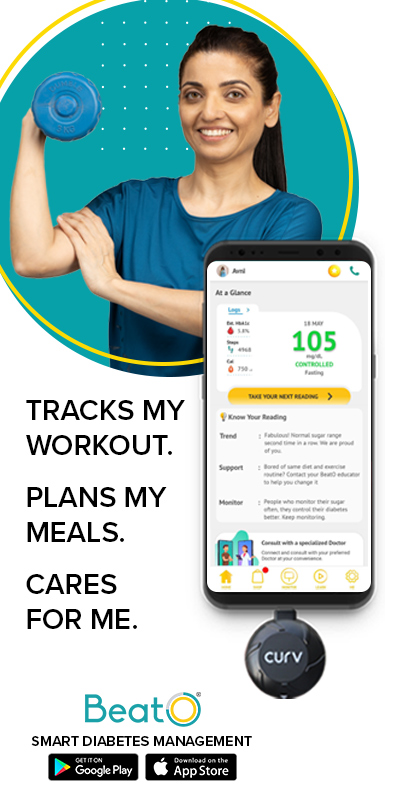Nutrient requirements for Indians – ICMR-NIN, 2020

The Indian Council of Medical Research (ICMR) and National Institute of Nutrition (NIN) have published an updated Recommended Dietary Allowance (RDA) and Estimated Average Requirements (EAR). The summary of this recommendation is given below:
Objective:
To provide evidence-based recommendation for the Indian population.
Method:
Recent databases from the various committees have been analyzed by experts to provide recommendations. The nationally representative data-sets such as the National Nutrition Monitoring Bureau (2015-16), National Family Health Survey – 4 (2015-16), the World Health Organization (2006-07), and the Indian Academy of Paediatrics (2015) are analyzed.
Recommendations:
REFERENCE BODY WEIGHT- as per the modified definition, reference Indian adult man and woman are individuals between the age of 20-39y and bodyweight of 65 kg and 55 kg respectively.
ENERGY–
The present committee used a 10% and 9% reduction in BMI for males and females respectively as compared to the 5% reduction used by the earlier committee. While the earlier committee used higher PAL values, the present committee proposed a reduction in PAL values. Additional energy requirement as proposed by ICMR 2010 is considered for pregnant Indian women. For infants and children, while the earlier committee used FAO/WHO/UNU, 2004 equations; the present committee has used the WHO child growth standard data for the bodyweight of children and re-analyzed the energy requirement. The requirement for children above 6 years of age and 13-17 years of age can remain the same as suggested by the previous committee. Children are recommended to be engaged in moderate physical activity to decrease energy requirements.
PROTEIN–
The present committee has removed the protein digestibility corrections (PDCAAS) and used median obligatory nitrogen loss of 48 mg/kg as per WHO, 2007 and safe protein requirements (0.83 g/kg/day) for healthy Indian adults to define protein requirements for Indians of different age groups. Protein requirement for all age group is given below:
Men: 54.0 g/d;
Women: 46.0 g/d;
Pregnant women: +9.5 (2nd trimester) +22.0 (3rd trimester);
Lactating women (0-6m): +17.0 g/d; Lactating women (7-12m): +13.0 g/d;
Infants (0-6 m): 8.0g/d; Infants (6-12m): 10.5 g/d;
Children (1-3y): 12.5 g/d; Children (4-6y): 16.0 g/d; Children (7-9 y): 23.0 g/d;
Boys (10-12y): 32.0g/d; Girls (10-12y): 33.0 g/d;
Boys (13-15y): 45.0 g/d; Girls (13-15y): 43.0 g/d;
Boys (16-18y): 55.0 g/d; Girls (16-18y): 46.0 g/d.
FATS AND OILS –
FAO/WHO recommendations are used to meet the requirements for optimal fetal and infant growth and development, maternal health, and combating chronic energy deficiency (children and adults) and Diet Related Non-Communicable Diseases (DR-NCD) in adults.
The recommended intake of visible fat for sedentary, moderate, and heavy activity is 25, 30, and 40 g/d for adult men and 20, 25 and 30 g/d for adult women as against the single level recommended earlier.
DIETARY INTAKE –
The amount of fiber is recommended based on energy intake. Fiber intake of 30 g/2000 kcal is considered to be safe.
CARBOHYDRATE–
Dietary intake of carbohydrate is considered for the first time in RDA. A minimum intake of 100 – 130g of carbohydrates/day is recommended to ensure brain glucose utilization for ages 1 year and above.
MINERALS –
Calcium and Phosphorus –
Calcium recommendation for adult men and adult women is 1.5 times the earlier recommendation. For all age groups except infants, the recommended value of phosphorus is in the ratio of 1:1. For infants, it is 1.5 times the value recommended for calcium.
Men: 1000 mg/d;
Women: 1000 mg/d;
Pregnant women: 1000 mg/d;
Lactating women: 1200 mg/d;
Infants: 300 mg/d;
Children (1-3y): 500 mg/d; Children (4-6y): 550 mg/d; Children (7-9 y): 650 mg/d;
Boys/Girls (10-12y): 850mg/d;
Boys/Girls (13-15y): 1000mg/d;
Boys/Girls (16-18y): 1050mg/d.
Magnesium:
Men: 440 mg/d;
Women: 370 mg/d;
Pregnant women: 440 mg/d;
Lactating women: 400 mg/d; Infants (0-6 m): 30 mg/d;
Infants (6-12m): 70 mg/d;
Children (1-3y): 90 mg/d; Children (4-6y): 125 mg/d; Children (7-9 y): 175 mg/d;
Boys (10-12y): 240 mg/d; Girls (10-12y): 250 mg/d;
Boys (13-15y): 345 mg/d; Girls (13-15y): 340 mg/d;
Boys (16-18y): 440 mg/d; Girls (16-18y): 380 mg/d.
Sodium and Potassium:
Recommendations for sodium and potassium have been made according to WHO (2012) recommendation.
Recommended sodium – 2000 mg/day.
Recommended potassium – 3510 mg/day.
Iron–
8% absorption for men, women, and adolescents, and 6% for children is considered by the present committee. It is recommended that the density of ascorbic acid in the daily diet should be at least 20 mg/1000 kcal for improved iron absorption.
Men: 19 mg/d;
Women: 29 mg/d;
Pregnant women: 27 mg/d;
Lactating women: 23 mg/d;
Infants (6-12m): 3 mg/d;
Children (1-3y): 8 mg/d; Children (4-6y): 11 mg/d; Children (7-9 y): 15 mg/d;
Boys (10-12y): 16 mg/d; Girls (10-12y): 28 mg/d;
Boys (13-15y): 22 mg/d; Girls (13-15y): 30 mg/d;
Boys (16-18y): 26 mg/d; Girls (16-18y): 32 mg/d.
Zinc–
RDA for zinc is recommended after considering all processes of zinc loss for better bioavailability.
Men: 17 mg/d; Women: 13 mg/d;
Pregnant women: 14.5 mg/d;
Lactating women: 14 mg/d;
Infants (6-12m): 2.5 mg/d;
Children (1-3y): 3.3 mg/d; Children (4-6y): 4.5 mg/d; Children (7-9 y): 5.9 mg/d;
Boys/ Girls (10-12y): 8.5 mg/d;
Boys (13-15y): 14.3 mg/d; Girls (13-15y): 12.8 mg/d;
Boys (16-18y): 17.6 mg/d; Girls (16-18y): 14.2 mg/d.
Copper, Chromium, and Manganese –
Due to the nutritional importance, RDA for Cu, Cr, and Mn have been considered separately.
Recommendation for Copper- 2mg/day.
Recommendation for Chromium- 50 µg /day.
Recommendation for Manganese- 4mg/day.
Selenium:
The present Committee recommended 40 µg/day as an adequate intake of selenium.
Iodine –
The recommendation of iodine is based on iodine intake in the diet through food and fortified salt.
Men: 150 µg/d;
Women: 150 µg/d;
Pregnant women: 250 µg/d;
Lactating women: 280 µg/d;
Infants (0-6 m): 100 µg/d; Infants (6-12m): 130 µg/d;
Children (1-3y): 90 µg/d; Children (4-6y): 120 µg/d; Children (7-9 y): 120 µg/d;
Boys/ Girls (10-12y): 150 µg/d;
Boys (13-15y): 150 µg/d; Girls (13-15y): 150 µg/d;
Boys (16-18y): 150 µg/d; Girls (16-18y): 150 µg/d.
VITAMINS
Water-Soluble Vitamins
Thiamine (B1)–
The recommended thiamine intake is estimated by plotting erythrocyte transketolase activity coefficient (ETK-AC) values versus dietary thiamine intake data obtained from healthy human adult population studies.
Men (sedentary): 1.4 mg/d; Men (moderate): 1.8 mg/d; Men (heavy): 2.3 mg/d;
Women (sedentary): 1.4 mg/d; Women (moderate): 1.7 mg/d; Women (heavy): 2.2 mg/d;
Pregnant women: 2.0 mg/d;
Lactating women: 2.1 mg/d;
Infants (0-6 m): 0.2 mg/d; Infants (6-12m): 0.4 mg/d;
Children (1-3y): 0.7 mg/d; Children (4-6y): 0.9 mg/d; Children (7-9 y): 1.1 mg/d;
Boys (10-12y): 1.5 mg/d; Girls (10-12y): 1.4 mg/d;
Boys (13-15y): 1.9 mg/d; Girls (13-15y): 1.6 mg/d;
Boys (16-18y): 2.2 mg/d; Girls (16-18y): 1.7 mg/d.
Riboflavin (B2)–
The recommended riboflavin intake is estimated by plotting erythrocyte glutathione reductase activity coefficient (EGR-AC) values versus dietary riboflavin intake data obtained from human studies.
Men (sedentary): 2.0 mg/d; Men (moderate): 2.5 mg/d; Men (heavy): 3.2 mg/d;
Women (sedentary): 1.9 mg/d; Women (moderate): 2.4 mg/d; Women (heavy): 3.1 mg/d;
Pregnant women: 2.7 mg/d;
Lactating women (0-6m): 3.0 mg/d; Lactating women (7-12m): 2.9 mg/d;
Infants (0-6 m): 0.4 mg/d; Infants (6-12m): 0.6 mg/d;
Children (1-3y): 1.1 mg/d; Children (4-6y): 1.3 mg/d; Children (7-9 y): 1.6 mg/d;
Boys (10-12y): 2.1 mg/d; Girls (10-12y): 1.9 mg/d;
Boys (13-15y): 2.7 mg/d; Girls (13-15y): 2.2mg/d;
Boys (16-18y): 3.1 mg/d; Girls (16-18y): 2.3 mg/d.
Niacin (B3) –
Men (sedentary): 14 mg/d; Men (moderate): 18 mg/d; Men (heavy): 23 mg/d;
Women (sedentary): 11 mg/d; Women (moderate): 14 mg/d; Women (heavy): 18 mg/d;
Pregnant women: +2.5 mg/d;
Lactating women: +5 mg/d;
Infants (0-6 m): 2 mg/d; Infants (6-12m): 5 mg/d;
Children (1-3y): 7 mg/d; Children (4-6y): 9 mg/d; Children (7-9 y): 11 mg/d;
Boys (10-12y): 15 mg/d; Girls (10-12y): 14 mg/d;
Boys (13-15y): 19 mg/d; Girls (13-15y): 16mg/d;
Boys (16-18y): 22 mg/d; Girls (16-18y): 17 mg/d.
Pantothenic acid (B5) –
Recommendations for adults and pregnant women- 5 mg per day
Recommendations for lactating women- 2 mg per day
Recommendations for older infants- 3 mg per day
Recommendations for children – 4 mg per day
Recommendations for adolescents – 5 mg per day.
Pyridoxine (B6) –
Men (sedentary): 1.9 mg/d; Men (moderate): 2.4 mg/d; Men (heavy): 3.1 mg/d;
Women (sedentary): 1.9 mg/d; Women (moderate): 1.9 mg/d; Women (heavy): 2.4 mg/d;
Pregnant women: 2.3 mg/d;
Lactating women (0-6m): +0.26 mg/d; Lactating women (7-12m): +0.17 mg/d;
Infants (0-6 m): 0.1 mg/d; Infants (6-12m): 0.6 mg/d;
Children (1-3y): 0.9 mg/d; Children (4-6y): 1.2 mg/d; Children (7-9 y): 1.5 mg/d;
Boys (10-12y): 2.0 mg/d; Girls (10-12y): 1.9 mg/d;
Boys (13-15y): 2.6 mg/d; Girls (13-15y): 2.2 mg/d;
Boys (16-18y): 3.0 mg/d; Girls (16-18y): 2.3 mg/d.
Biotin (B7) –
Recommendations for adults and pregnant women- 40 µg/day
Recommendations for lactating women- +5 µg/day
Recommendations for 1–3 years – 20 µg/day
Recommendations for 4–10 years – 25µg/day
Recommendations for adolescents – 35µg/day.
Folate (B9)–
Based on the recent Indian data, the present committee has revised the folate intake.
Men: 300 µg/d;
Women: 220 µg/d;
Pregnant women: 570 µg/d;
Lactating women: 330 µg/d;
Infants (0-6m): 25 µg/d; Infants (6-12m): 85 µg/d;
Children (1-3y): 120 µg/d; Children (4-6y): 135 µg/d; Children (7-9 y): 170 µg/d;
Boys (10-12y): 220 µg/d; Girls (10-12y): 225 µg/d;
Boys (13-15y): 285 µg/d; Girls (13-15y): 245 µg/d;
Boys (16-18y): 340 µg/d; Girls (16-18y): 270 µg/d.
Vitamin B12 –
Men: 2.2 µg/d;
Women: 2.2 µg/d;
Pregnant women: +0.25µg/d;
Lactating women: +1.0 µg/d; Infants (0-12m): 1.2 µg/d;
Children (1-3y): 1.2 µg/d; Children (4-6y): 1.2 µg/d; Children (7-9 y): 2.2 µg/d;
Boys (10-12y): 2.2 µg/d; Girls (10-12y): 2.2 µg/d;
Boys (13-15y): 2.2 µg/d; Girls (13-15y): 2.2 µg/d;
Boys (16-18y): 2.2 µg/d; Girls (16-18y): 2.2 µg/d.
Ascorbic acid (Vitamin C) –
The committee has evaluated all available evidence on this subject for the recommended intake of vitamin C.
Men: 80 mg/d;
Women: 65 mg/d;
Pregnant women: +15 mg/d;
Lactating women: +50 mg/d;
Infants (0-6m): 20 mg/d; Infants (6-12m): 30 mg/d;
Children (1-3y): 30 mg/d; Children (4-6y): 35 mg/d; Children (7-9 y): 45 mg/d;
Boys (10-12y): 55 mg/d; Girls (10-12y): 50 mg/d;
Boys (13-15y): 70 mg/d; Girls (13-15y): 65 mg/d;
Boys (16-18y): 85 mg/d; Girls (16-18y): 70 mg/d.
Fat-Soluble Vitamins
Vitamin A –
The carotene conversion ratio is revised by the present committee to account for tissue conversion, based on recent knowledge. The recommended conversion factor is 6:1 for all carotenoids except β-cryptoxanthine and α-carotene where a CF of 12:1 is recommended.
Men: 1000 µg/d;
Women: 840 µg/d;
Pregnant women: 900µg/d;
Lactating women: 950 µg/d;
Infants (0-12m): 350 µg/d;
Children (1-3y): 390 µg/d; Children (4-6y): 510µg/d; Children (7-9 y): 630 µg/d;
Boys (10-12y): 770 µg/d; Girls (10-12y): 790 µg/d;
Boys (13-15y): 930µg/d; Girls (13-15y): 890 µg/d;
Boys (16-18y): 1000 µg/d; Girls (16-18y): 860 µg/d
Vitamin D-
Based on the available evidence, the committee decided to increase the recommended intake of vitamin D compared to previous recommendations.
Men: 600 IU/d;
Women: 600 IU/d;
Pregnant women: 600 IU/d;
Lactating women: 600 IU/d;
Infants (0-12m): 400 IU/d;
Children (1-3y): 600 IU/d; Children (4-6y): 600 IU/d; Children (7-9 y): 600 IU/d;
Boys (10-12y): 600 IU/d; Girls (10-12y): 600 IU/d;
Boys (13-15y): 600 IU/d; Girls (13-15y): 600 IU/d;
Boys (16-18y): 600 IU/d; Girls (16-18y): 600 IU/d.
Vitamin E & K –
The recommendation is similar to FAO/ WHO recommendations.
Recommendation for Vitamin E: 7.5 – 10 mg per day
Recommendation for Vitamin K: 55μg / day.
WATER
Water intake for the Indian population is recommended with consideration to fluid guidelines and other factors. Water recommendation for the Indian population is as follow:
Adult Man: 32-58 ml per kg body mass;
Adult Woman: 27-52 ml per kg body mass;
Children: > 60 ml per kg body mass;
Adolescent boys: 47-60 ml per kg body mass; Adolescent girls: 39-49 ml per kg body mass;
Pregnant woman: 2.1 to 3.2 liters per day;
Elderly (sedentary activity): 33 ml per kg body mass; Elderly (Moderate activity): 38 ml per kg body mass.
RDA FOR ELDERLY (≥60 Yrs) –
Dietary fiber: Men- 32g/d, Women- 25g/d
Protein: Men- 54.0 g/d, Women- 45.7 g/d
Vitamin A: Men- 1000 μg/d, Women- 840 μg/d
Thiamin B: Men- 1.4 mg/d, Women- 1.4 mg/d
Riboflavin B2: Men- 2.0 mg/d, Women- 1.9 mg/d
Niacin: Men- 14 mg/d, Women- 11 mg/d
Vitamin C: Men- 80 mg/d, Women- 65 mg/d
Vitamin B6: Men- 1.9 mg/d, Women- 1.9mg/d
Folate: Men- 300 μg /d, Women- 200 μg /d
Vitamin D: Men- 800 IU/d, Women- 800 IU /d
Calcium: Men- 1200 mg/d, Women- 1200 mg/d
Magnesium: Men- 440 mg/d, Women- 370 mg/d
Niacin: Men- 14 mg/d, Women- 11 mg/d
Iron: Men- 19 mg/d, Women- 19 mg/d
Zinc: Men- 17 mg/d, Women- 13.2 mg/d
Iodine: Men- 150 μg /d, Women- 150 μg /d.
Image Credit: Food photo created by user15285612 – www.freepik.com






